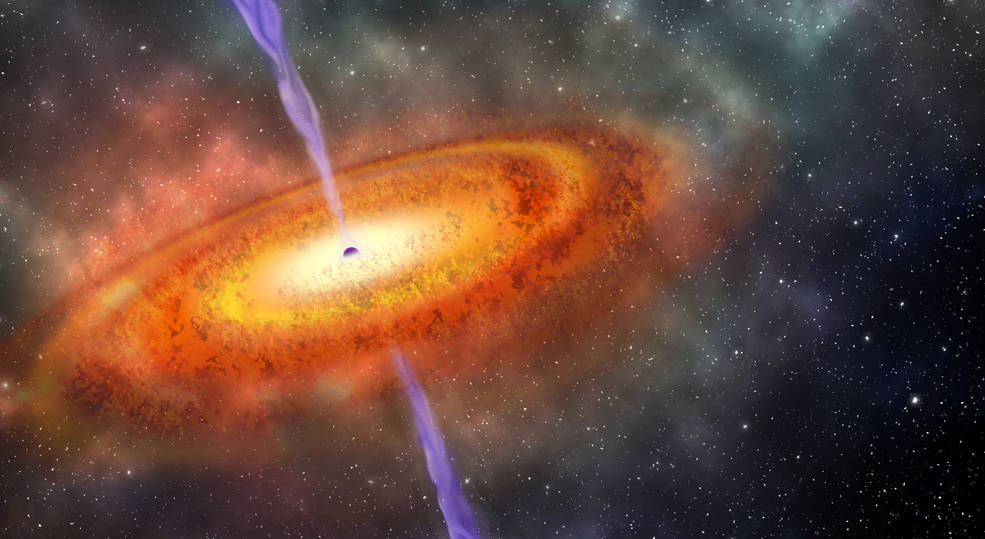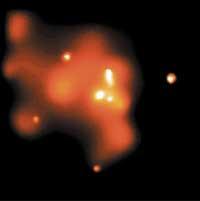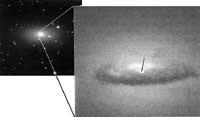They conclude that the dust surrounding mass black holes is distributed in the clouds.
2021/09/30 Galarraga Aiestaran, Ana - Elhuyar Zientzia Iturria: Elhuyar aldizkaria

A group of astrophysicists from Mexico, Korea and Spain investigate the distribution of cosmic dust around black holes. In particular, the Grand Telescope of the Canary Islands has been used for comments, which has made it possible to supplement the information obtained in previous observations. They have concluded that cosmic dust is organized in clouds hundreds of light-years from the black hole and is influenced by the wind coming out of the black hole.
Itziar Aretxaga Mendez is one of the astrophysicists involved in the research and has explained that the active nuclei of the galaxies have black holes between 10 and 1 billion more mass than the Sun. The material around these black holes emits enormous energy and is able to excite the material that is thousands of light years away from the core of the galaxy.
One of these excited materials is dust silicates. When they receive the energy from the black hole, they emit infrared radiation, which was analyzed in a previous work through the Spitzer telescope. Five models representing the composition and distribution of the powder were compared, observing that, according to the most appropriate model, the powder is distributed in the clouds and that the influence of the wind from the black hole is also appreciable.
On this occasion, with the Grand Telescope of the Canary Islands, they have obtained thirteen high-definition infrared images of black holes previously investigated. Except in one, it has been observed in all others that the emission is concentrated in the core.
The models of dust distribution and composition, as well as data from other observations, have concluded that the most likely geometry is that the powder is distributed in the clouds located a few hundred light-years from the black hole, forming part of the wind from the black hole. They have therefore managed to confirm the result obtained above.

Gai honi buruzko eduki gehiago
Elhuyarrek garatutako teknologia






